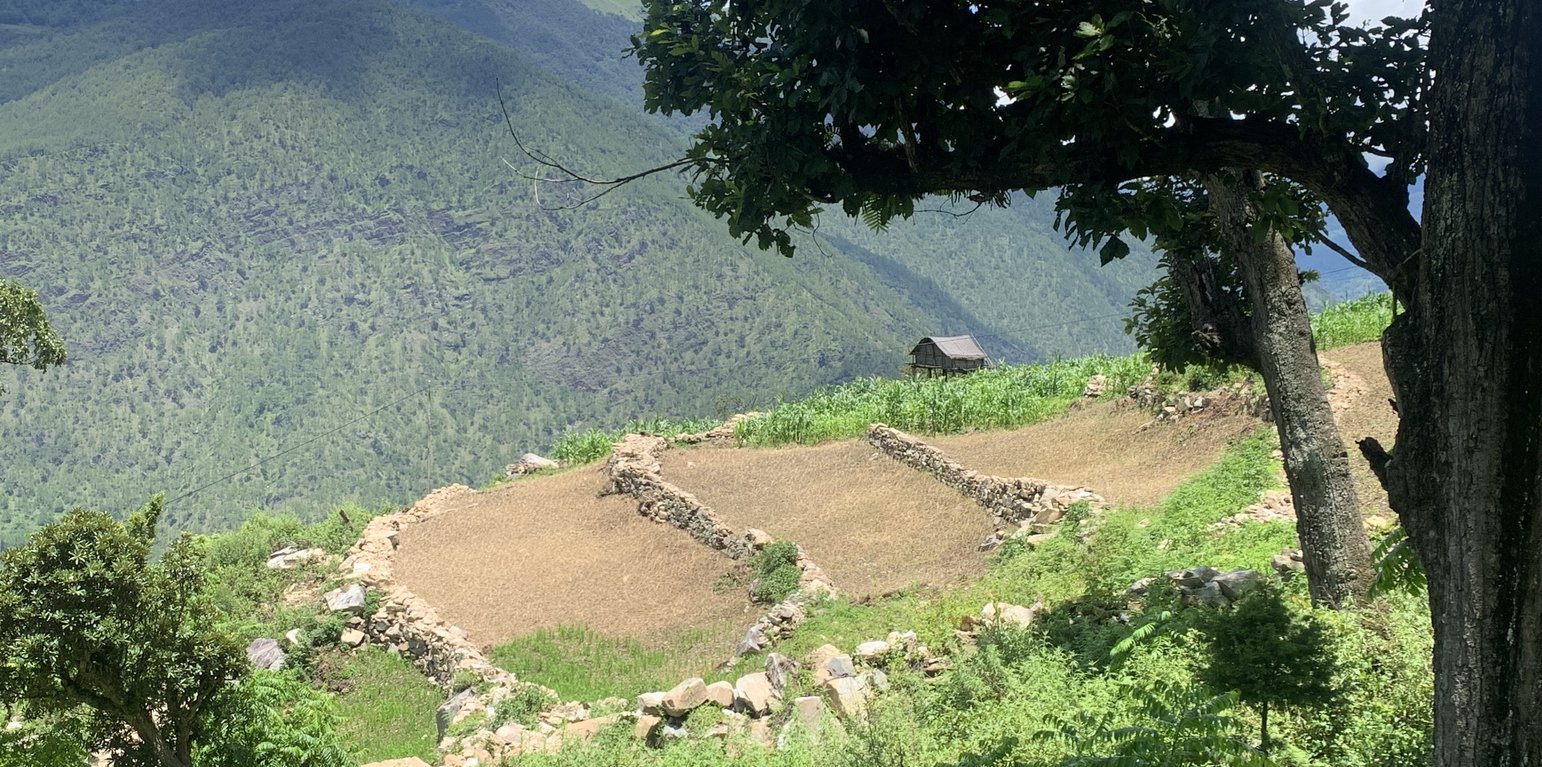



Contour stone bunds are small walls of stone that are laid out along the contour line to help reduce soil erosion, conserve soil moisture, increase soil fertility, to ease workability, increase cropping area, and ultimately ensure sustainable use of lands for enhanced food and nutrition security. This practice is recommended in fields that have plenty of surface stones (> 20%). Construction of contour stone bunds not only helps to get rid of the excess surface stones and gravel but also reduces the slope gradient through formation of partial terraces over a few years.
The stone bund is not new to Bhutan, being a mountainous country, forefathers used the technique to remove stones from the field and stabilise the land for agricultural purposes. Therefore, there were some traditional stone lines constructed in the study area.
Constructing stone bund is labour intensive, therefore land users resort to a labour sharing approach where all the land users from the community come together and work on a rotational basis until every household in the community has established stone bunds.
The major activities and inputs required to establish the contour stone bund includes sensitization of beneficiaries, followed by SLM action planning, and hands-on-training. Field implementation follows this sequence: (a) determination of intervals between stone bunds, (b) demarcation of contour lines using an ‘A’ frame, (c) digging a trench of 0.1 - 0.2 m deep and 0.5 m wide to establish a foundation along the contour lines, and (d) constructing stone lines along the trenches with the larger stones at the base to set a sound foundation. A typical stone wall is 0.3 m high (1 ft) and 0.3 - 0.5 m wide, but this depends on the slope and availability of stones in the field. Contour stone bunds are commonly spaced 6 metres apart on slopes of 60%. In some cases, the fodder grass slips are also planted at the base of the stone bund for better stabilization of the bunds and fodder availability.
The major drawbacks of this SLM technology according to respondents are (a) labour demanding, (b) no immediate return, and (c) the space between piled stones harbours rodents leading to crop damage.
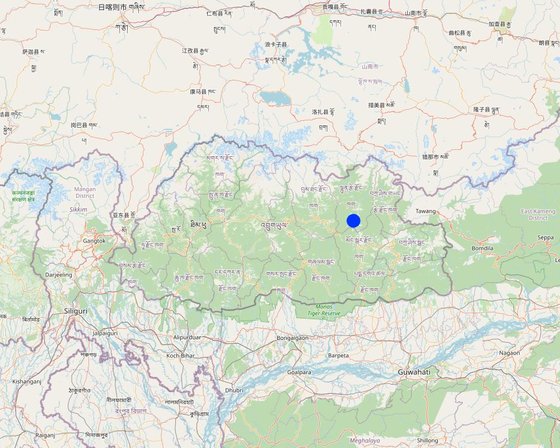
Lugar: Zangkhar Village, Yabi-Zangkhar Chiwog, Jaray Gewog, Lhuentse Dzongkhag, Bután
No. de sitios de Tecnología analizados: 2-10 sitios
Difusión de la Tecnología: distribuida parejamente sobre un área (approx. 0.1-1 km2)
¿En un área de protección permanente?: Sí
Fecha de la implementación: 2015
Tipo de introducción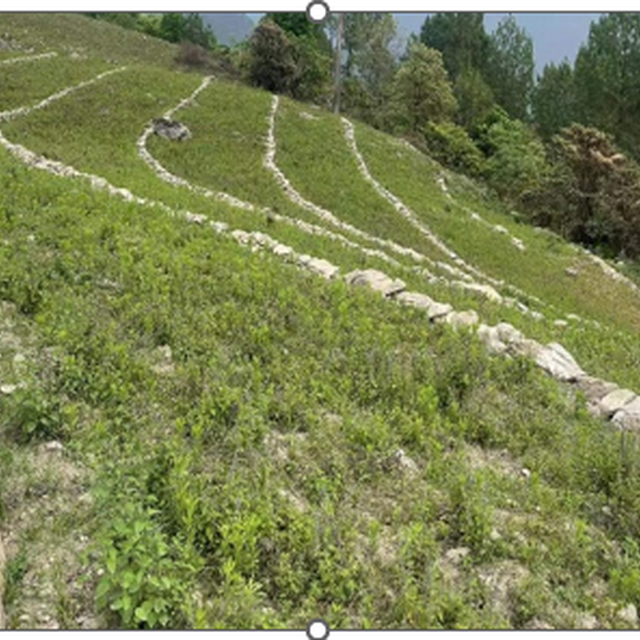
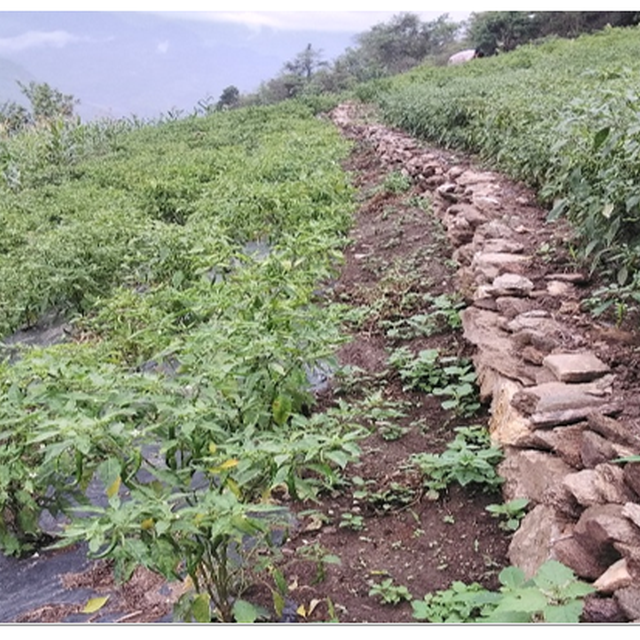

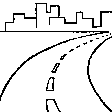





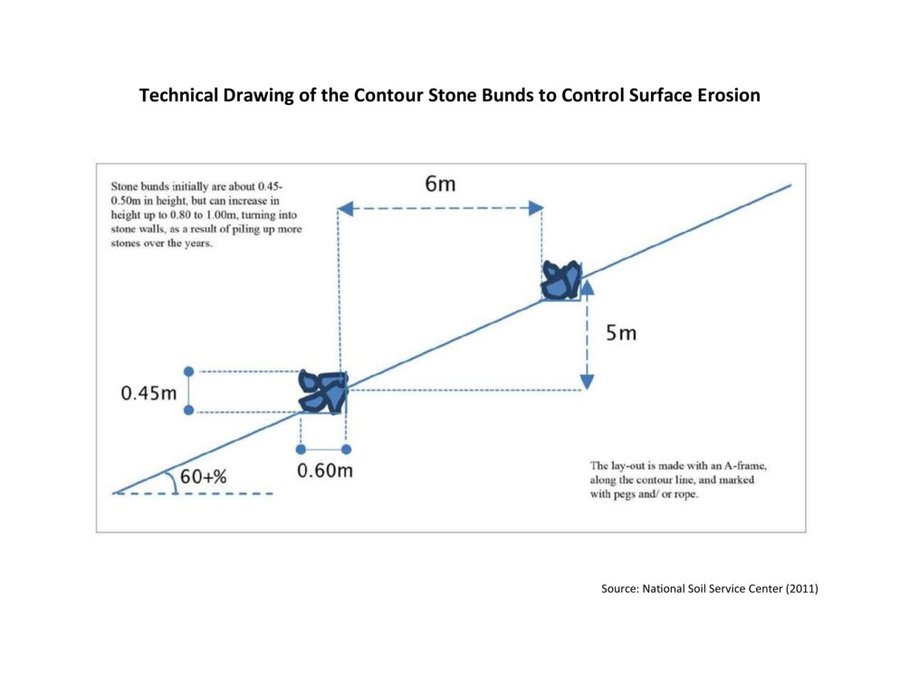
| Especifique insumo | Unidad | Cantidad | Costos por unidad (Nu) | Costos totales por insumo (Nu) | % de los costos cubiertos por los usuarios de las tierras |
| Mano de obra | |||||
| Labour | Person/day | 49,0 | 400,0 | 19600,0 | 100,0 |
| Otros | |||||
| Project incentive | Per hectare | 1,0 | 6420,0 | 6420,0 | |
| Costos totales para establecer la Tecnología | 26'020.0 | ||||
| Costos totales para establecer la Tecnología en USD | 325.25 | ||||
The cultivation of potatoes increased due to an increase in the cultivable area as the stones are removed.
Crops appear greener and healthier due prevention of soil erosion as the topsoil is retained. Maize leaves were dark green and potatoes were bigger.
Due to the removal of stones from the soil, it is suitable for diverse crop growth (deep-rooted and shallow). Therefore, the land user can cultivate diverse crops throughout the year. Crop diversity and increased growing season will ensure land user with stable household income even if one crop fails.
The technology reduces workload (mechanization) and increases cultivable area leading to the cultivation of diverse crops for market purposes.
Increased due to the removal of stones from the land.
Expenses on agriculture input are reduced. For example, with the use of a power tiller which costs Nu. 1500 per day, it takes 2 days to complete ploughing. If it is done by oxen then it takes 8 days and Nu. 400 is paid as a labour charge per day. The total amount required using the power tiller is Nu. 3000 and using oxen is Nu. 3200 with an additional cost of food for the labourers.
Previously the land user was not able to meet the demand for maize as a feed for the cattle. With the introduction of stone bunding and increased production, the land user can meet her domestic demand for maize and additionally sell processed maize alcohol as a source of farm income.
There is an increased diversity of income sources as the land user can grow different crops throughout the year and also sell some processed products.
Reduced work load due to farm mechanization. The removal of stone from field had eased workability, lesser wear and tear of farm tools.
With the increase in cultivable areas, technology has ensured food self-sufficiency and generated income to meet other household demands for food.
Reduced workload is directly related to an increase in the available time for recreational opportunities.
Support provided by the NSSC and land users' active participation in the implementation of the technology enabled the national agency to have a better understanding of the land users. Labour sharing enabled the community to work together to achieve a common goal which improved collaboration among the community members.
Awareness was created during the introduction of the technology by SLM specialists. Further, the field observation on the neighbours' fields who have already established stone bunds has led to 90% of the population knowing about the stone bunding in the locality.
Human-wildlife conflict was reduced as wild boars were not able to climb the stone bund. Although other wild animal such as procupine continued to cause harm to the crop.
The technology improved soil quality leading to improved production and increased household income.
The stone bund holds irrigation water preventing surface runoff. Further, the gradual labelling of the land increases soil moisture retention capacity.
Increased due to crop diversification and year-round cultivation.
Soil erosion and surface runoff is reduced leading to decreased soil loss.
Eroded soil is accumulated at bunds.
Soil organic matter is decreased at the upper part of the terrace and increased at the lower part of the terrace due to runoff from the slopes.
Increased with the practice of year-round cultivation.
The technology increased suitability of the soil for diverse crops increasing plant diversity.
The better crop stand resists pest and diseases attacks on crops. To some extend, the stone bunds keep the wild boars away.
Reduced surface runoff leads to decreased landslides or debris flow.